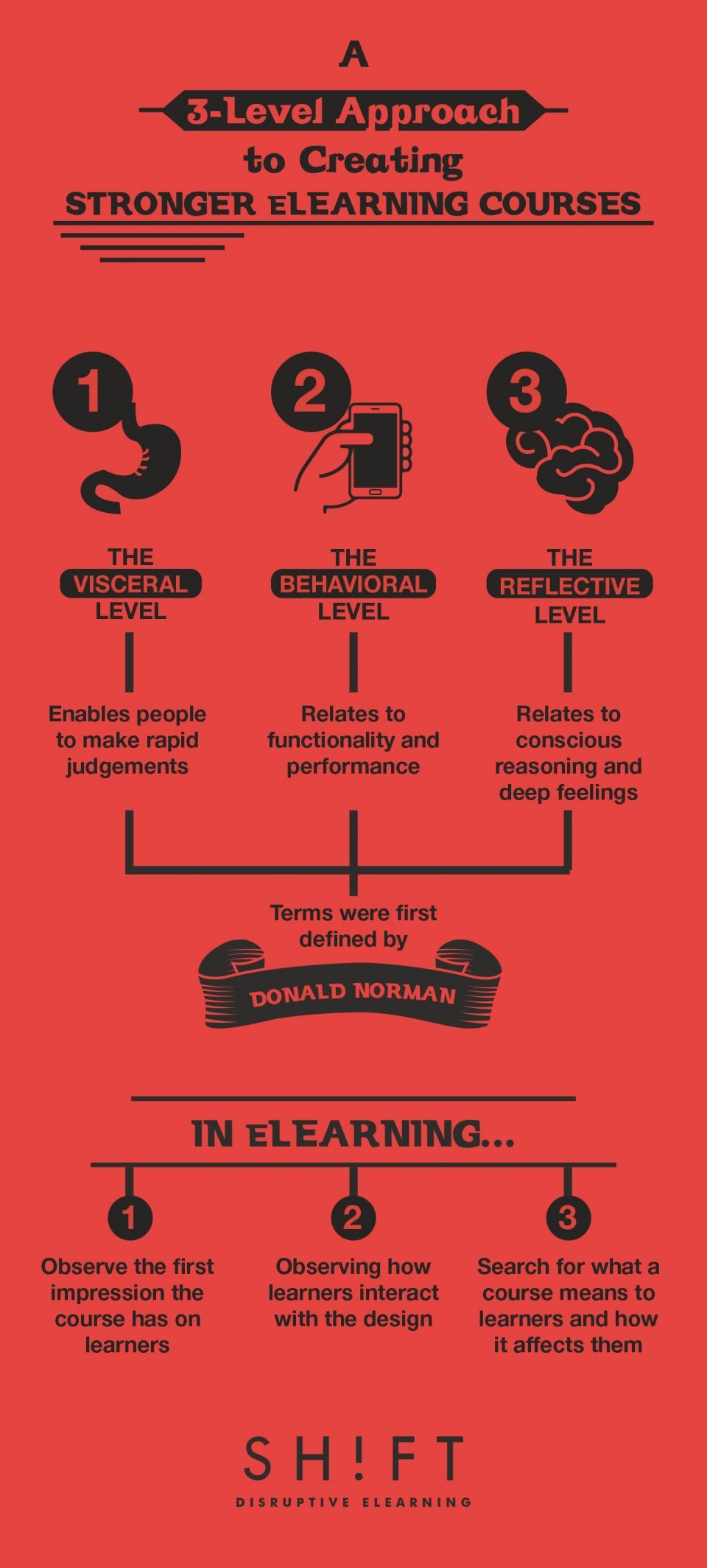A 3-Level Approach to Creating Stronger eLearning Courses Infographic
eLearning Professionals to achieve an emotional eLearning design should pay attention to the three cognitive levels, first defined by Donald Norman:
- Visceral,
- Behavioral, and
- Reflective.
To understand how to apply emotional eLearning design look at the following three cognitive levels.
- The Visceral Level (Appearance)
eLearning developers can test the visceral quality of their courses by observing the first impression it has on learners. An effective eLearning design on a visceral level will spark some sort of positive emotion, grabbing learners’ attention immediately, and sparking interest in users within those three vital seconds of a first glance. Therefore, any course that is aesthetically pleasing will be successful at this cognitive level. - The Behavioral Level (Usability)
At this level, usability is fundamental; design must be intuitive and easy to use to avoid learners experiencing negative emotions such as confusion and frustration. An effective eLearning design at this level requires developers to understand users’ needs, achievable by observing how learners interact with the design. - The Reflective Level (Impact)
In short, effective eLearning design should evoke positive emotions and create a lasting impression on your learners. If learners feel safe, happy, and fulfilled, they will actually enjoy learning.By participating in courses that are successful on a reflective level, users form an attachment to the course, are proud to take part in the program, and experience enjoyment. Such success also increases the likelihood that they will recommend the course to others.







You can adjust your cookie preferences here.